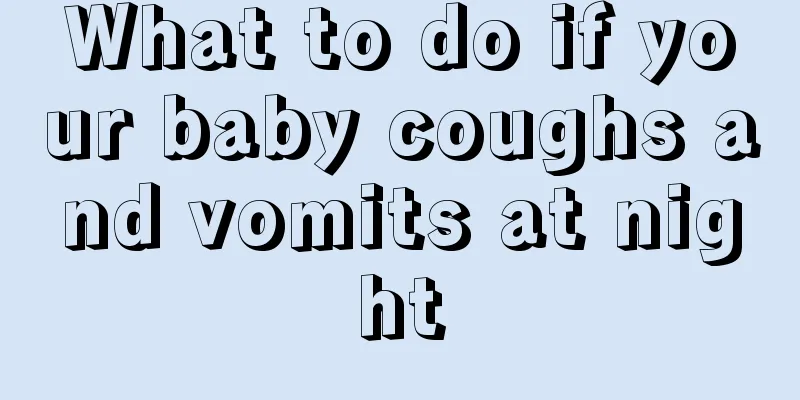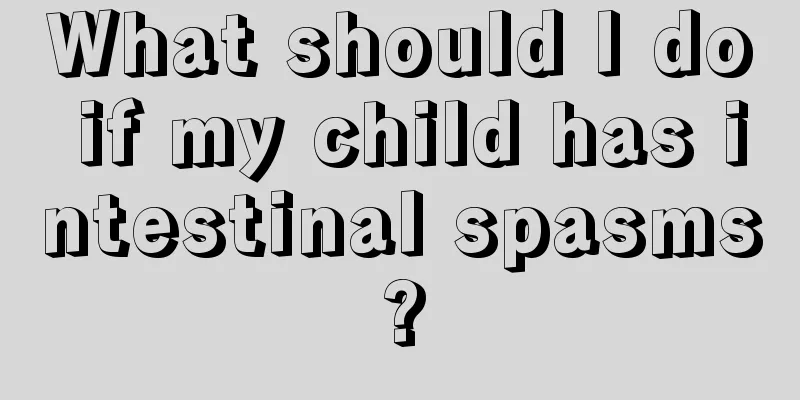Do children often say they are cold?

|
When children feel cold, there are generally many reasons. It may be that they are wearing too few clothes, or that they are not keeping warm enough. However, it may also be related to abnormal metabolism caused by malnutrition. Parents should monitor their children's body temperature and pay attention to the baby. If the baby has no symptoms of discomfort, keep the child warm. What to do if a child has a fever and feels cold The situation of fever and cold hands and feet is often seen in clinical practice. The child has a high fever but cold hands and feet. After the body temperature gradually drops, the hands and feet slowly become warm again. In fact, this is a phenomenon of false cold and true heat. It is a fever caused by inflammation of viral influenza caused by wind and cold. At this time, do not wrap the child tightly with a quilt because you think the child is cold. As a result, the child's body temperature cannot be dissipated in time and keeps rising, leading to high fever and cramps, which has an adverse effect on the child's physical recovery. At this time, it is best to measure the child's oral temperature. If the temperature is lower than 38.5 degrees, you can give the child a warm bath to cool down. If the temperature reaches 38.5 degrees, give the child medicine to lower the temperature. Several ways to deal with children's fever 1. Most babies have fevers because of catching a cold. If the baby has cold hands and feet, white tongue coating, pale face, and light urine during the fever, parents can use ginger and brown sugar water to dispel the cold. Adding two or three one-inch long pieces of green onion to the water will help the baby sweat. 2. If the baby has a fever, sore throat, yellow tongue coating, and yellow urine with a strong odor, it means that the child has severe internal heat. At this time, he cannot drink ginger and sugar water, but should drink plenty of warm boiled water. You can also add a small amount of salt to the water. If there is no improvement, go to the hospital immediately. If your baby has a high fever, parents don't need to become more and more nervous. We should observe the baby's activity at all times, replenish water, and reduce the fever appropriately when necessary. I believe the baby will get better soon. If the baby's condition does not improve, we still have to choose to go to the hospital as soon as possible. Physical cooling methods for babies with fever 1. Eat more, urinate more, and dress your baby in loose and light clothes to increase the chance of skin heat dissipation. Drinking more water and getting more rest after catching a cold are the simplest and most effective measures. Drink more water and urinate more often. It is best to drink boiled water in small amounts and multiple times. If your baby doesn't like to drink plain water, you can also give him his favorite fruit juice, soup or even drinks. As long as it can help your baby replenish more fluids and urinate more, it will help reduce the temperature and expel toxins from the body. Some mothers think that their baby's fever is caused by catching a cold, so in order to help the baby sweat, they put layer upon layer of clothes on the baby. The baby's face becomes red, and covering themselves too much and too thickly is not conducive to heat dissipation through the skin. If the external environment is already high, the baby may have a persistent high fever or even be life-threatening. 2. Apply cold and wet compress to the head or use a cooling patch You can soak a towel in cold water, squeeze it slightly until no water drips, fold it to the size of your baby's forehead, place it on the forehead, and change the towel every 5 minutes depending on the temperature. Cooling patches are a new type of physical cooling product introduced to my country from abroad. Currently, there are many brands available for mothers to buy, with similar effects. You can use them depending on your baby's acceptance. 3. Use an ice pillow or ice pack to cool your head There are pediatric head ice pillows or ice bags designed specifically for infants and young children. They contain special gel and should be placed in the refrigerator before use. They can maintain a low temperature after being taken out. When using, they can be placed under the baby's head or applied to the forehead. They are especially suitable for situations with high fever. It should be noted that it is best not to use ice pillows or ice bags for babies under 6 months old to avoid cooling down too quickly or too low. |
<<: Can children use foot patches?
>>: Under what circumstances would a child lose their virginity?
Recommend
There are 8 quick remedies for toothache in children
As the old saying goes, toothache is not a diseas...
What iron supplements do children take?
Children have a great demand for iron during thei...
What is the reason for the child's red lips?
Parents should take good care of their children, ...
Wash eyes of newborn baby with tea water
In our lives, there are many newborns who may onl...
Why do children often have fever?
When every child is young, parents will be partic...
How to prevent burns in children
Burns are a very common phenomenon in life. Some ...
Ten-month-old baby is restless when sleeping at night
Many mothers have a deep understanding of the pro...
What should I do if my child’s gums are swollen and painful?
We all know that for some children, dental proble...
Treatment of pediatric neurological diseases
Nowadays, the incidence of diseases among many ch...
What's wrong with the white spots on the child's throat?
Children's health is a matter of great concer...
What is the reason for the three-month-old baby's shortness of breath?
When parents are taking care of their babies, the...
What causes cerebral palsy in children?
Cerebral palsy is very harmful to human health. A...
What are the ways to improve children's immunity?
No one wants their children to be sick often. Whe...
How old can a child smell body odor?
Body odor is a particularly embarrassing disease ...
What should I do if my child has ringworm on his face? Introducing countermeasures for you
If a child has rashes on his face, parents must p...









